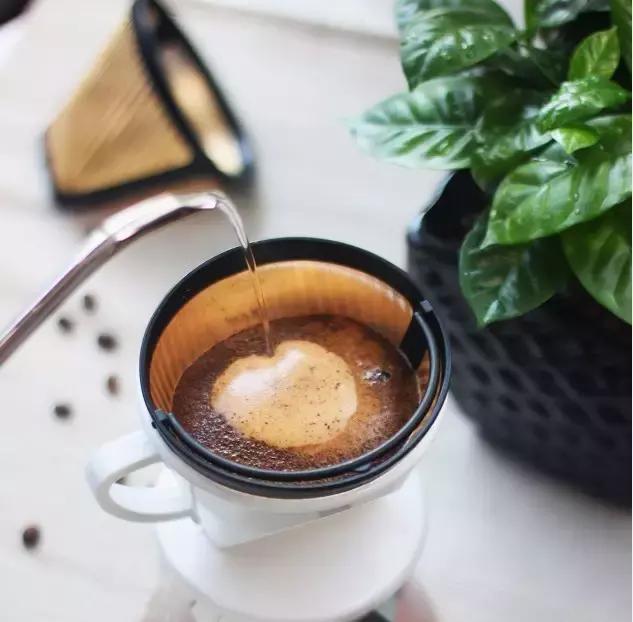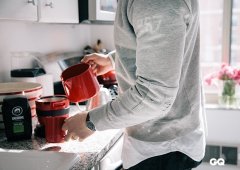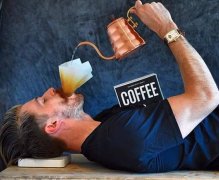One of the golden cup theories of coffee: why is the extraction rate up to 18% Murray 22%?

For professional baristas, please follow the coffee workshop (Wechat official account cafe_style)
Today we are going to discuss coffee's so-called "Gold Cup" theory. Some people don't like the golden cup theory because the name seems to imply that as long as it meets this standard, it is "delicious coffee". In fact, I quite agree that coffee that does not conform to the golden cup theory tastes good, but it is a bit strange to say that we can ignore the golden cup theory at all. Maybe it's called "extraction theory". Maybe we don't have any opinions. In fact, what we want to talk about is extraction.
When coffee beans are ground into coffee powder, not everything can be dissolved in water. No matter how hard we try and how violent we are, we can only extract up to 30% at most. But this 30% contains flavors we don't like, so most coffee people will probably agree that our goal is to extract 20%. If we consider the capacity up and down a little bit, it will be about
18%-22%
Is an acceptable range. So, no matter what method we use to make coffee, hand brew, race wind, or even espresso, the final goal is an extraction rate of 18%-22%.
You probably know how to improve the extraction rate of coffee with your feet (on the contrary, you know how to reduce it). Here are a few ways to improve the extraction rate:
Increase the temperature of cooking water
Grind the beans a little bit
The cooking time is prolonged.
Stir harder.
Anyway, the target is 18% Mak 22%. Every time you make coffee, you find a way to pull the extraction rate to this range, that's it, this is the focus of golden cup theory.
What? No more?
What I really have to say is really like this. But you should have a problem, that is, we made coffee, how do we know the extraction rate? Unexpectedly, this seems to be a very simple question, which is the beginning of all the trouble.
What the extraction rate is is easy to explain. We want to know how much coffee powder got into our coffee, of course.
Coffee extract = weight of coffee powder before brewing-weight of coffee powder after brewing
And then the extraction rate is
Extraction rate = coffee extraction amount / weight of coffee powder before brewing
Remember (again), this number is between 18% and 22% and you go to heaven, which is called "insufficient extraction" less than 18% and "overextraction" more than 22%. Is there a problem with this? Okay, no problem, we'll just go up here... What? There's a problem? Where there is a problem, the weight of coffee powder before brewing is of course measured before brewing (remember to strictly say "ground" weight, but we'll talk about it later). The weight after brewing is of course the weight of coffee grounds after soaking.
Wait, did you find out the smart one? Coffee grounds are actually finished coffee powder, plus some water attached to it. What if we just want to know how heavy the rest of the coffee powder is? It's very "simple". Just find a way to make it dry and measure it later. So, in the past, people came up with a great one.
"oven drying"
Every time you make coffee, the leftover coffee grounds are dried, dried and then weighed.
That is, you make a cup of coffee, probably wait for the oven to bake for you, you measure it again, take out the computer and press it, and finally … What, the extraction is a little high? So you adjust it again, flush it again, dry it in the oven, and count it again. What? It's too low... At this time, I think a sane person will not want to do the whole process again.
So, we're going to think of something else. Now we just need to remember one thing: the goal of any coffee brewing is to achieve an extraction rate of 18%-22%.
Important Notice :
前街咖啡 FrontStreet Coffee has moved to new addredd:
FrontStreet Coffee Address: 315,Donghua East Road,GuangZhou
Tel:020 38364473
- Prev

"do you really know anything about coffee?" A few questions about making coffee: the ratio of water to powder and the temperature of the water.
Professional barista communication Please follow the coffee workshop (Wechat official account cafe_style) wants to make a good cup of coffee. We have already mentioned the importance of choosing beans and how to preserve coffee beans. However, owning good beans also requires good craftsmanship to make a cup of mellow coffee. Although you and I are not professional coffee brewers, we only need to master a few key points.
- Next

The second golden cup theory of coffee: what is TDS? TDS reference values of countries all over the world
Professional baristas Please follow the Coffee Workshop (Wechat official account cafe_style) We said last time that regardless of whether we brew coffee using cat-and-dog brewing, our goal is to extract about 20% of the coffee. In order to preserve some space, we allow 18% and 22% to be acceptable. To achieve this goal, of course, it has not been said that we have got the perfect coffee. But...
Related
- Beginners will see the "Coffee pull flower" guide!
- What is the difference between ice blog purified milk and ordinary milk coffee?
- Why is the Philippines the largest producer of crops in Liberia?
- For coffee extraction, should the fine powder be retained?
- How does extracted espresso fill pressed powder? How much strength does it take to press the powder?
- How to make jasmine cold extract coffee? Is the jasmine + latte good?
- Will this little toy really make the coffee taste better? How does Lily Drip affect coffee extraction?
- Will the action of slapping the filter cup also affect coffee extraction?
- What's the difference between powder-to-water ratio and powder-to-liquid ratio?
- What is the Ethiopian local species? What does it have to do with Heirloom native species?

